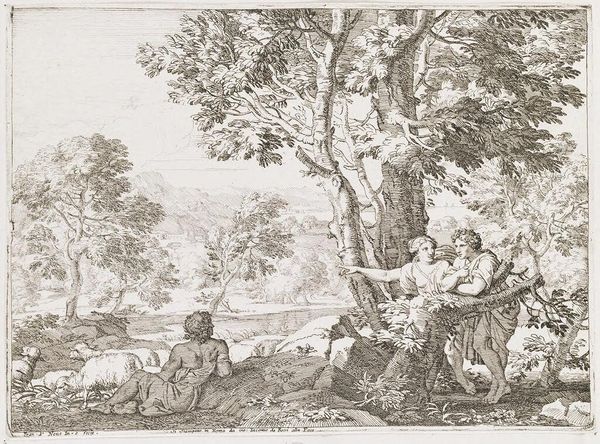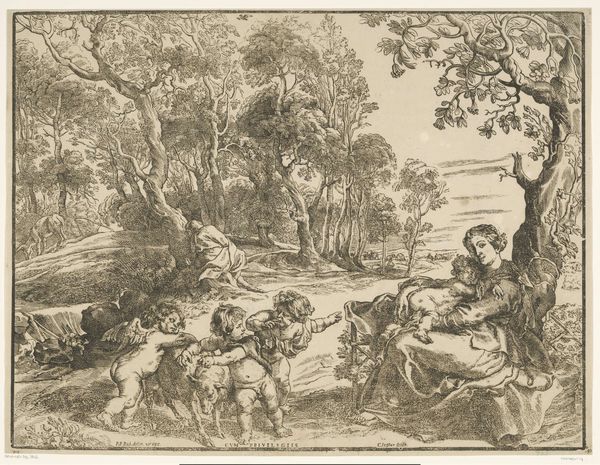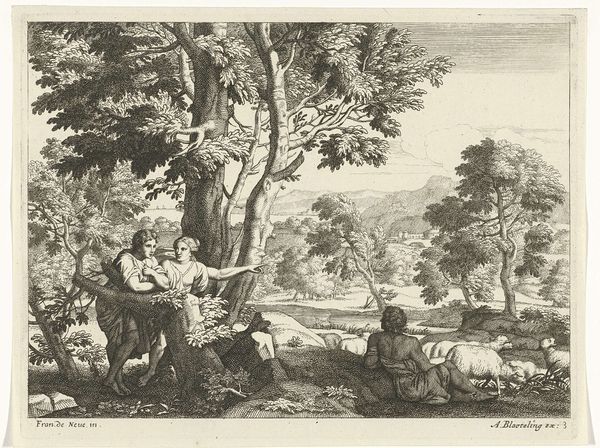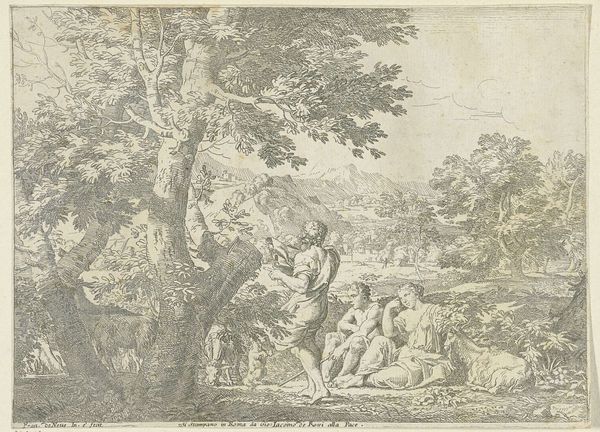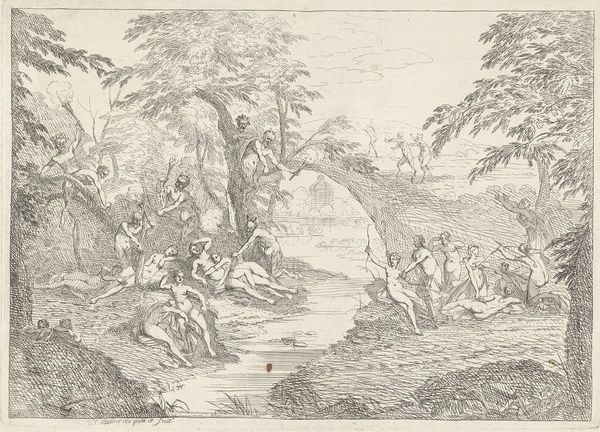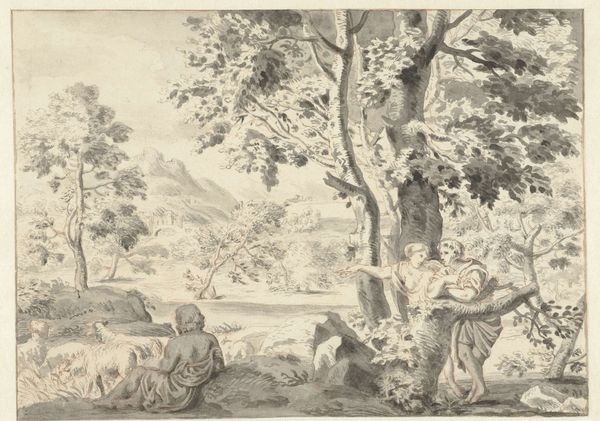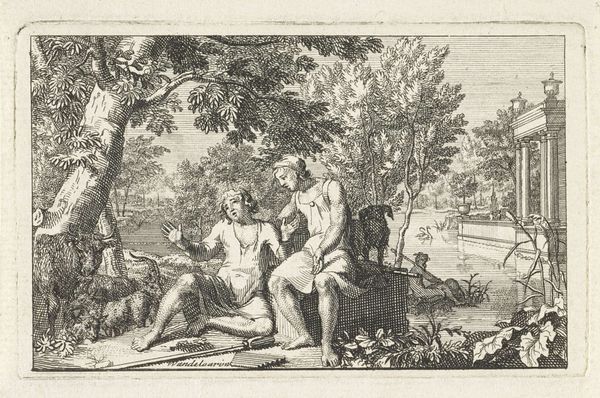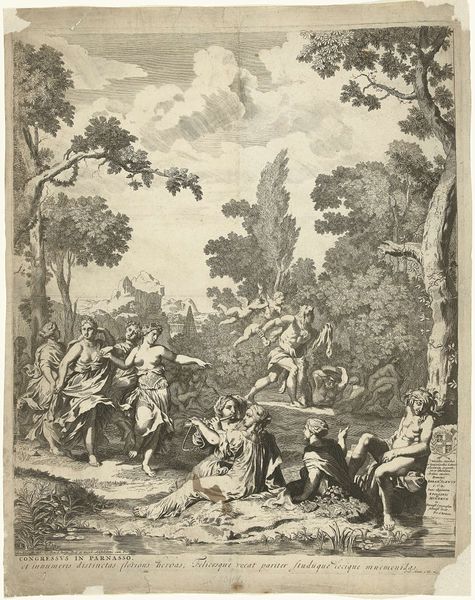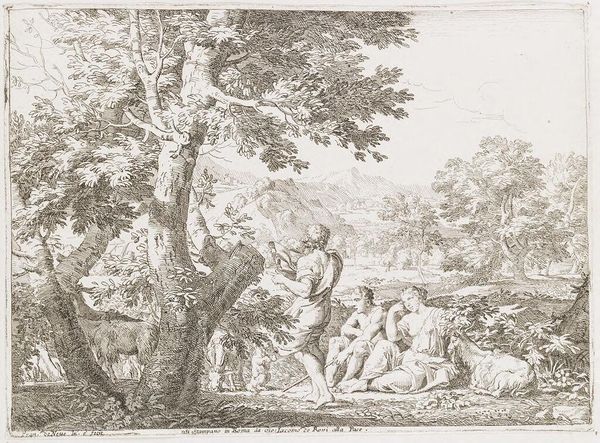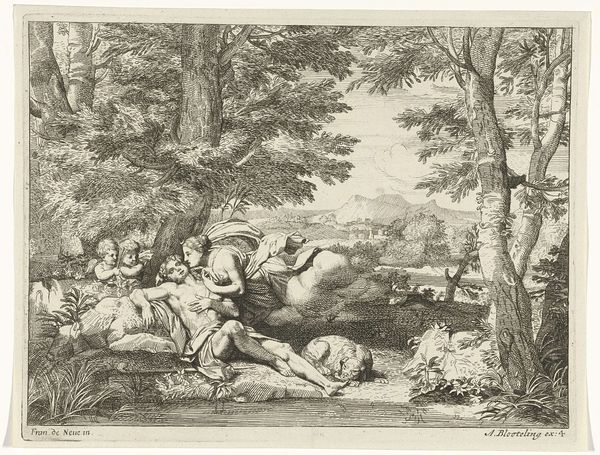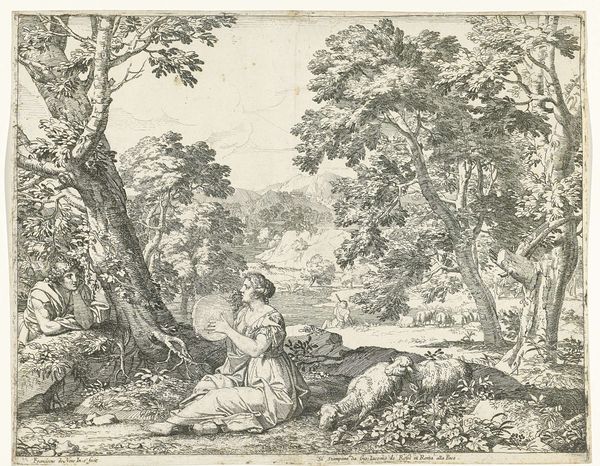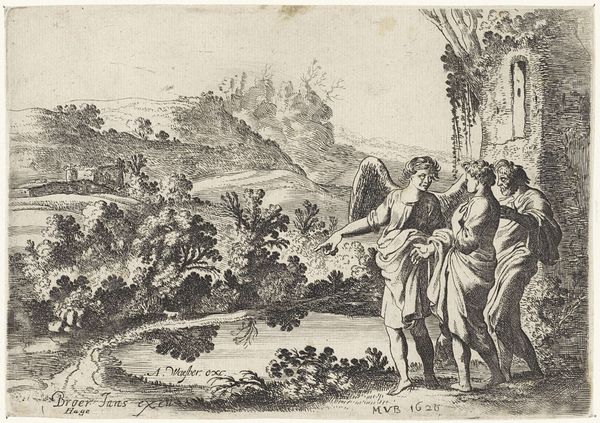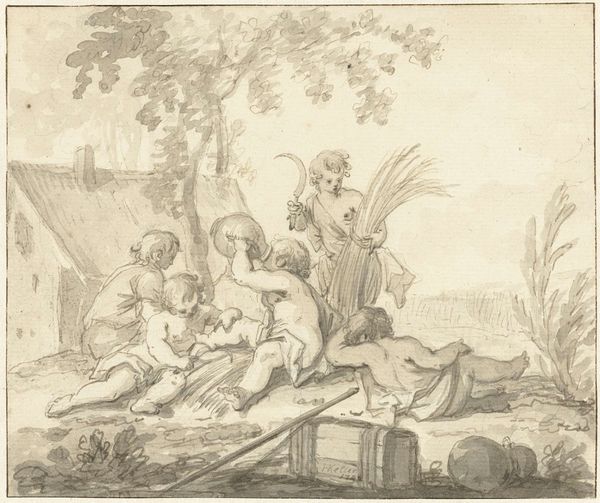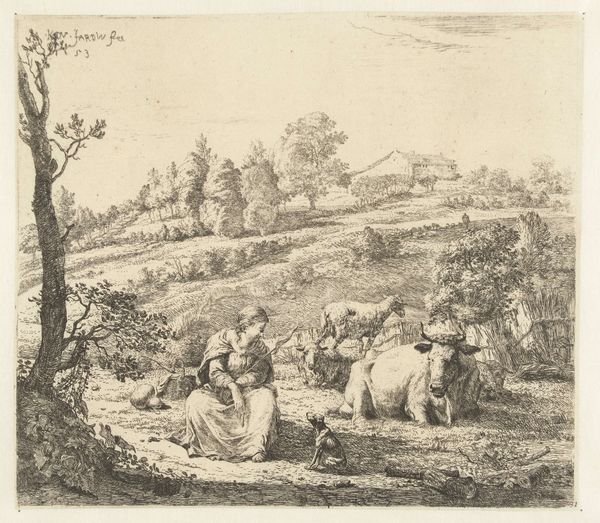
print, etching
#
baroque
# print
#
etching
#
landscape
#
figuration
#
genre-painting
Dimensions: height 191 mm, width 260 mm
Copyright: Rijks Museum: Open Domain
Curator: Franciscus de Neve the Younger created this etching, "Landscape with Three Herdsmen," sometime between 1660 and 1666. It is currently held at the Rijksmuseum. Editor: The composition strikes me immediately. The foreground figures command attention, their poses and the tree acting as a barrier of sorts to the serene landscape in the background. The scale, being a print, creates an intimacy. Curator: Indeed. This artwork fits into a historical tradition that romanticizes rural life, pastoral imagery being connected to literary trends valuing simple living close to nature. Here, it’s interesting to think about the role of these idealized representations of shepherds. Editor: What’s particularly interesting, from a formal standpoint, is the contrast between the busy textures of the foreground trees and figures and the relatively smooth, open spaces beyond. That etched line, of course, dictates everything, from depth to surface. Note how Neve uses hatching to create a range of values to convey light and shadow. Curator: I think that by placing idealized human forms against a backdrop of ‘untouched’ nature, the work implies specific values around social relations to nature, which could then reinforce power dynamics. For example, by highlighting a scene from everyday life, how do we interpret and understand those dynamics? Editor: True, and by using figuration and establishing compositional elements like lines and patterns, it draws our eye into specific zones that demand deciphering of content and symbols. One might ask questions about semiotics, to evaluate if it actually challenges or supports those dynamics. Curator: It can certainly seem contradictory, but if the artist situates ‘shepherds’ in a generalized space of freedom, does this flatten cultural variations among them or make specific identities illegible in service of this notion? Editor: I find it more interesting to note how the textures in the upper portion are as equally rich, as the tree trunk to the right, to generate interest and allow a dynamic, structured balance across the entirety of this picturesque landscape. Curator: Analyzing it from this perspective reveals potential oversights. While art inherently conveys meanings through these qualities, engaging in these contexts, especially within its sociohistorical background, allows for a fuller understanding and prevents us from unconsciously reaffirming those same imbalances that might be there. Editor: Certainly, appreciating its formal architecture provides essential data that makes all interpretations about underlying meanings plausible and cogent, I'd say.
Comments
No comments
Be the first to comment and join the conversation on the ultimate creative platform.
